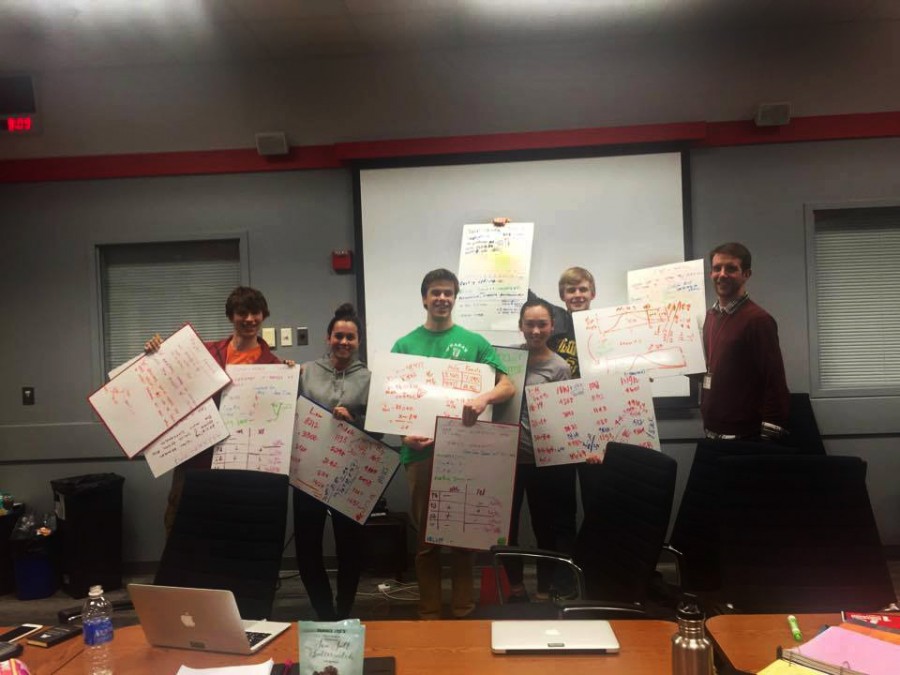Seniors compete in Moody’s Mega Math Challenge
photo courtesy of Ashley Zagaros
The time limit on the math challenge is 14 hours, and each member of the winning team is awarded $20,000.
Every year thousands of high school students take part in Moody’s Mega Math Challenge. On one Saturday morning, Abbey Nichols, Sam Rocheford, Ashley Zagaros, Preston Becker, and Nick Backes with the help of science teacher Mr. Tanner Stevens decided to take on the challenge.
The Moody’s Mega Math challenge is an annual contest for high school juniors and seniors. It involves applying math, like statistics and calculus, to a real world problem. In 2015, the students solved whether or not the cost of higher education was worth the value of a degree. Each year, competitors have fourteen hours after downloading the problem to submit a twenty-page paper on their solution. A $20,000 scholarship is awarded to every student on the winning team.
This year the problem the students were tasked with solving was about car sharing by finding the most fuel efficient and eco-friendly car sharing model. There were several sub-questions within the challenge. The students had to apply models to different demographics including factors such as the population, driving time, and car mileage. “When the students approached me with this opportunity I was very excited. I felt it really fit with BSM’s goal of solving problems that matter,” Stevens said.
The process of solving the problem proved to be difficult for the students, especially managing their time. “It was very stressful for us because after eight hours of work we had nothing to show for it. We ended up only having two hours to write the entire twenty-page paper,” senior Abbey Nichols said.
Part of the challenge was that some of the topics weren’t specifically taught about at BSM, but luckily some of the students on the team had gone to camps and already had some background knowledge. “It’s like calculus, statistics, business, and other classes all mashed together. It was cool to solve problems using what we knew from class and applying it to real life situations,” Nichols said.
It’s tough to say how far the BSM team will make it in the competition, as there are thousands of teams competing and it’s the school’s first time doing the challenge. It takes all of March for the judges to read all of the solutions, and the team should hear back in April to know whether or not they made it to the next stage of the challenge. “I was really impressed and proud of this group of students, and I’m enthusiastic to see the results in March,” Stevens said.
The team recently heard back that they have advanced to the next stage of the competition. During the second round of judging, a smaller panel serving as contention judges extensively reads and discusses the remaining papers to select papers worthy of receiving semi-finalist and honorable mention awards and tentatively ranks the top six finalist teams. These finalists are announced some time in April, and the team is excited to see how far they will get.






































![Teacher Lore: Mr. Hillman [Podcast]](https://bsmknighterrant.org/wp-content/uploads/2025/03/teacherlorelogo-1200x685.png)




